Mnamon
Ancient writing systems in the Mediterranean
A critical guide to electronic resources
News
-
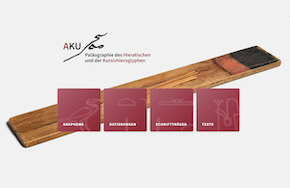 2023-12-27
2023-12-27Digital paleography of hieratic and cursive hieroglyphs
The site AKU-PAL has been updated. The new features include many new signs, enriched bibliographic information, improved image quality and the addition of very granular filters for searching (epoch, dynasty, ruler and more).
(D.Salvoldi) -
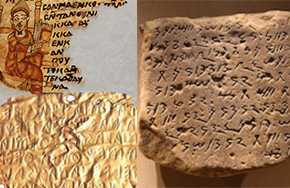 2023-11-22
2023-11-22Mnamon update
Two new sections have just been published in Mnamon: Meroitic and Nubian. The author is the specialist Daniele Salvoldi (American University of Cairo).
Also the sections for Etruscan, Faliscan and Lemnian were carefully reviewed and enriched by the specialists.
(A. Russo) -
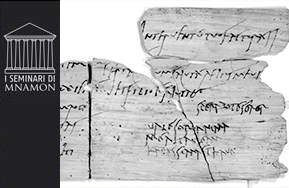 2023-10-12
2023-10-12Mnamon Seminars
On Monday October 23rd at 3 p.m. the following seminar will be held online:
Alan Bowman (University of Oxford)
"Writing on Wood in Roman Britain: the Vindolanda Tablets"
Abstract. The wooden writing-tablets from the fort of Vindolanda, to the south of Hadrian’s Wall, date to the period between 90 and 130 and and make a unique contribution to our knowledge of writing materials, documentary practices and literacy in the first century AD. The formats of the hundreds of tablets and the writing practices demonstrate the flexibility with which the materials were used for administrative documents and personal letters. The content and the variety of identifiable individual hands, the range of subject-matter and the palaeographical features of the texts afford a unique insight into writing practices and the literate environment across the Roman empire as a whole. These features will be illustrated by a number of individual examples which attest new and in some cases very surprising phenomena.
Live video streaming here.
(A.Russo) -
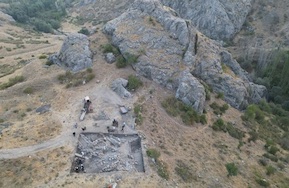 2023-10-11
2023-10-11New Indo-European language
Excavations at Hattusa (Boğazköy, Republic of Turkey), the Hittite capital , led by a German (DAI - Istanbul) and Turkish (Istanbul University) archaeological mission, have brought to light a fragment of ritual text in cuneiform script that contains a recitation in a hitherto unknown Indo-European language.
Among the thousands of tablets found over 100 years of archaeological activity, most are written in the Hittite language, and many others hand down evidence in the Luwian and Palaic languages, also belonging to the Proto-Anatolian group of the Indo-European family. The found text preserves evidence of the language of the Land Kalasma, probably located in northwestern Anatolia. The text will be published by mission philologist Prof. D. Schwemer (University of Würzburg, Germany) and will add a new piece to the cultural and linguistic complexity of the Bronze Age Anatolian world.
Maggiori informazioni
(G.Torri) -
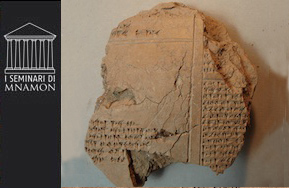 2023-09-20
2023-09-20Mnamon Seminars
On Thursday October 12th at 3 p.m. the following seminar will be held online:
Giulia Torri (University of Florence)
"Uso simbolico delle parti del corpo nei rituali magici ittiti"
Abstract. Tra i testi in grafia cuneiforme ritrovati nella capitale ittita, Hattuša (XVII-XIII sec. a.C.) un ampio numero contiene la descrizione di rituali magici eseguiti per la purificazione di pazienti da diversi tipi di calamità e malattie. I rituali magici si compongono di numerose pratiche che spesso coinvolgono il corpo del paziente che viene trattato, pulito e purificato al fine di ripristinare il suo stato originario di salute. Visto che spesso il paziente è il sovrano, la purificazione del suo corpo si estende simbolicamente al ripristino dell’ordine nel regno da lui controllato. Il punto di partenza di questa presentazione è un rituale di scongiuro antico-ittita per il re Labarna (XVII-XVI sec.?), CTH 412.3, che conserva la purificazione dettagliata delle parti del corpo del sovrano, elencate una per una, attraverso il contatto con le arti del corpo equivalenti di un piccolo animale. Partendo da questo rituale saranno analizzati motivi simili in altri testi al fine di mostrare l’uso e il trattamento simbolico del corpo del sovrano nella magia ittita e la possibile origine di tale pratica in ambito anatolico.
Live video streaming here.
(A.Russo) -
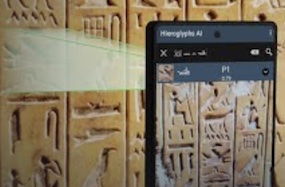 2023-09-11
2023-09-11Hieroglyphs AI
The Hieroglyphs AI Android app has been released. This application is designed to assist in the translation of Egyptian inscriptions and texts from the Classical period. The app is built upon Artificial Intelligence (AI) technologies that utilize Deep Learning neural networks to optically recognize hieroglyphs.
The app displays the code according to Gardiner's list, along with any associated phonetic meanings. It operates without the need for an internet connection, and no registration or login is required.
You can download the app for free from the Google Play Store:
https://play.google.com/store/apps/details?id=ai.hieroglyphs.hieroglyphs_ai
(D. Salvoldi) -
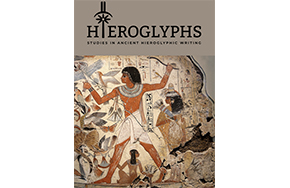 2023-08-25
2023-08-25Hieroglyphs. Studies in Ancient Egyptian Writing
New, internationally peer-reviewed, open access e-journal that aims to promote the academic study of hieroglyphs in all their dimensions in Egyptology and with a comparative angle extending to other hieroglyphic traditions and writing systems with a strongly iconic component.
http://www.hieroglyphs-journal.org/
(D. Salvoldi) -
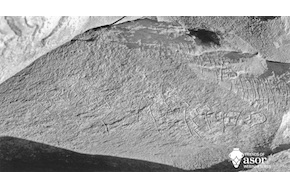 2023-08-23
2023-08-23Seminar
On August 31st starting at 3 p.m. the following seminar will be held online via Zoom (a registration fee is required to fund scholarships and ASOR activities)
Seth Sanders (University of California, Davis)
Who really invented the alphabet?
Abstract. Despite its vast influence, we are still uncertain about precisely where the world’s most influential communication system came from. This talk will present new evidence for a strictly visual, rather than Egyptian-scribal-based linguistic basis for the alphabet’s origins, and for its informal use by non-scribal—and perhaps also scribal--users during its first 500 years. This evidence for the success of a new sort of non-scribal writing system outside of bureaucratic centers has historical analogies in the spread and development of the Greek alphabet and can help us reflect on the role of play and craft traditions in the invention and spread of new cultural phenomena. Information: https://www.asor.org/news/2023/8/webinar-sanders-alphabet
(D. Salvoldi) -
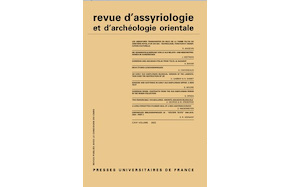 2023-07-03
2023-07-03Amorrean-Accadian bilingual vocabulary discovered
The paper by Andrew George, Manfred Krebernik, "Two Remarkable Vocabularies: Amorite-Akkadian Bilinguals!", Revue d'assyriologie et d'archéologie orientale Vol. 116 (2022), 113-166) concerns the edition of two hitherto unpublished cuneiform tablets from the Paleo-Babylonian period that contain a bilingual Amorrean and Akkadian vocabulary. The discovery makes a significant contribution to our knowledge of the grammar and vocabulary of Amorrean, a Northwest Semitic language.
Abstract
(S. Gaspa) -
 2023-01-23
2023-01-23Mnamon update
The Mnamon sections for Cuneiform Hittite, Cuneiform Luwian, Hieroglyphic Luwian, Hurrian, Carian, Phrygian, Lycian, Lydian, Eblaite, Messapic, Raetic, Ancient South Arabian and Ancient North Arabian were carefully reviewed and enriched by the specialists.
(A.Russo)
